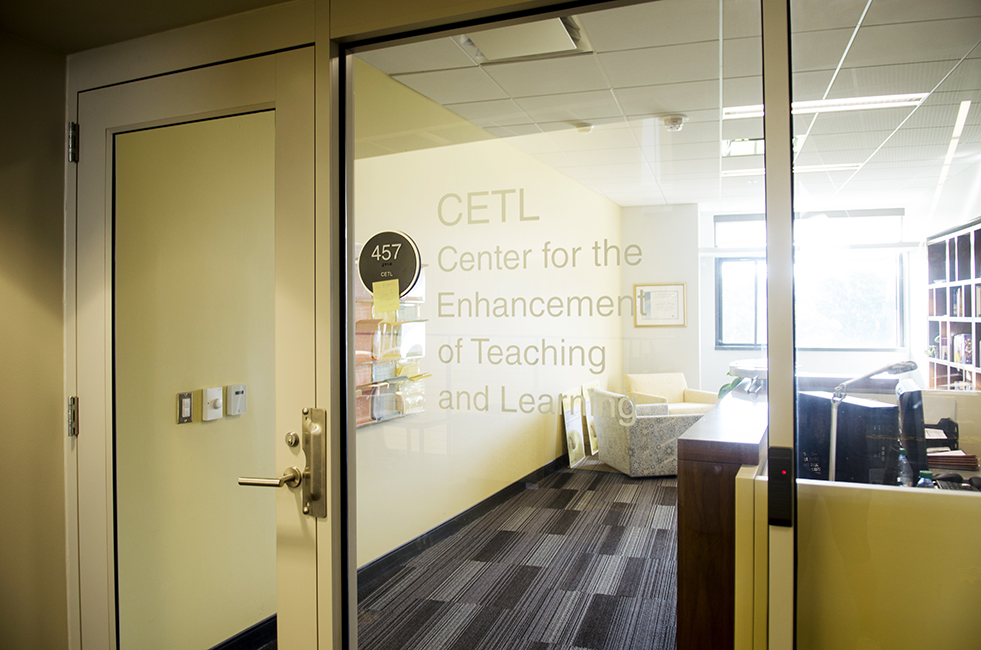This year’s Celebrating Teaching Day, where different groups showed off their work on teaching and faculty-development innovation, was held on March 14 in the Student Center Ballroom.
A large portion of those groups were Faculty Learning Communities: Center for Teaching and Learning (CTL)-sponsored teams of eight to 12 faculty members who collaborate over the course of a semester or year to develop a project around a teaching-related theme with a budget of $2,000.
Among the presenters was Dr. Todd Zakrajsek, associate director of fellowship programs in the Department of Family Medicine at the University of North , who argued for engaging “independent of pedagogy.”
“The concept is: to what extent is the student actually interested in and working toward acquiring some information in the classroom, however that’s being delivered?” Zakrajsek said.
Over 140 faculty members attended this year’s Celebrating Teaching Day, making it CTL’s largest event of the year.
While CTL primarily offers a support structure that faculty can tap into at any time of their career, it also plays a role in instructor assessment and administering the Course Instructor Opinion Survey (CIOS) and the Teaching Assistant Opinion Survey (TAOS).
Administrators at Tech often stress the difference between summative and formative assessments of teaching performance and their respective roles in faculty development. The numerical CIOS results that are averaged from student responses at the end of the semester is a good example of a summative assesment.
However, while perhaps useful as a metric, summative assessments offer less qualitative information in terms of guidance on how to improve teaching.
One option that instructors currently have to receive informal, formative guidance is through a Class Dialogue, in which a professor invites a CTL-trained facilitator into the classroom in a guided activity where students can openly discuss their thoughts about class structure and potential improvements to be made.
Afterward, the facilitator compiles student responses and discusses them with the professor in a formative style, and the professor can choose whether or not to implement changes based on student feedback.
“As I tell the students, with the others, I’ll gather that and report it as data with what you write now, I will quote your group exactly with what you say, so the professor is hearing it through your words,” Weinsheimer said.
The final step of the process is that the professor later talks to the class and explains his or her rationale on any decisions made or not made, completing the collaborative exchange between students and professor.
In terms of long-term plans to improve teaching on campus, one exciting development is the recent completion of the Task Force on the Learning Environment’s final report and action plan developed on its recommendations.
Working between May and December 2015, the Task Force on the Learning Environment, composed of administrators, faculty and students, sought to identify ways to improve academic culture on campus and develop new initiatives to raise Tech educators to an even higher caliber.
“Our work was underpinned by a large, fascinating data set arising from the Student Experience Survey, which was an impressive, student-led undertaking that generated a great deal of valuable information,” said Paul Goldbart, dean of the College of Sciences, who was a co-chair of the Task Force on the Learning Environment.
Some programs have already spawned as a result of task force recommendations.
First, a mid-semester survey pilot program began in the School of Physics, in which professors receive feedback from students during the actual course of the semester, contrasting the post-semester results CIOS offers.
Additionally, a new class of teaching fellows, the Provost Teaching and Learning Fellows, was launched in the hope that they would help connect faculty members across disciplines and departments to educational innovation. Each Fellow is supported by $14,000 and must attend at least one conference on teaching and learning.
Another relevant recommendation of the Task Force was to release written CIOS comments, currently only available to professors, to administrators as well.
“My expectation is that the sharing of written CIOS comments between faculty and leaders (such as school chairs and, possibly, deans) would engender valuable, informed dialog that would allow recognition of excellent performance and give important clues about opportunities to address challenges and help instructors achieve excellence,”
Goldbart said.
“I am, however, concerned about the potential for serious personal discomfort and even professional harm that could arise when students harass instructors by making offensive, inappropriate statements under the veil of anonymity.” Goldbart said. “We as a community should not tolerate such behavior.”
Although passed in Student Government, administrative access to written CIOS responses has not been approved at the Faculty Senate level at the time of writing.
